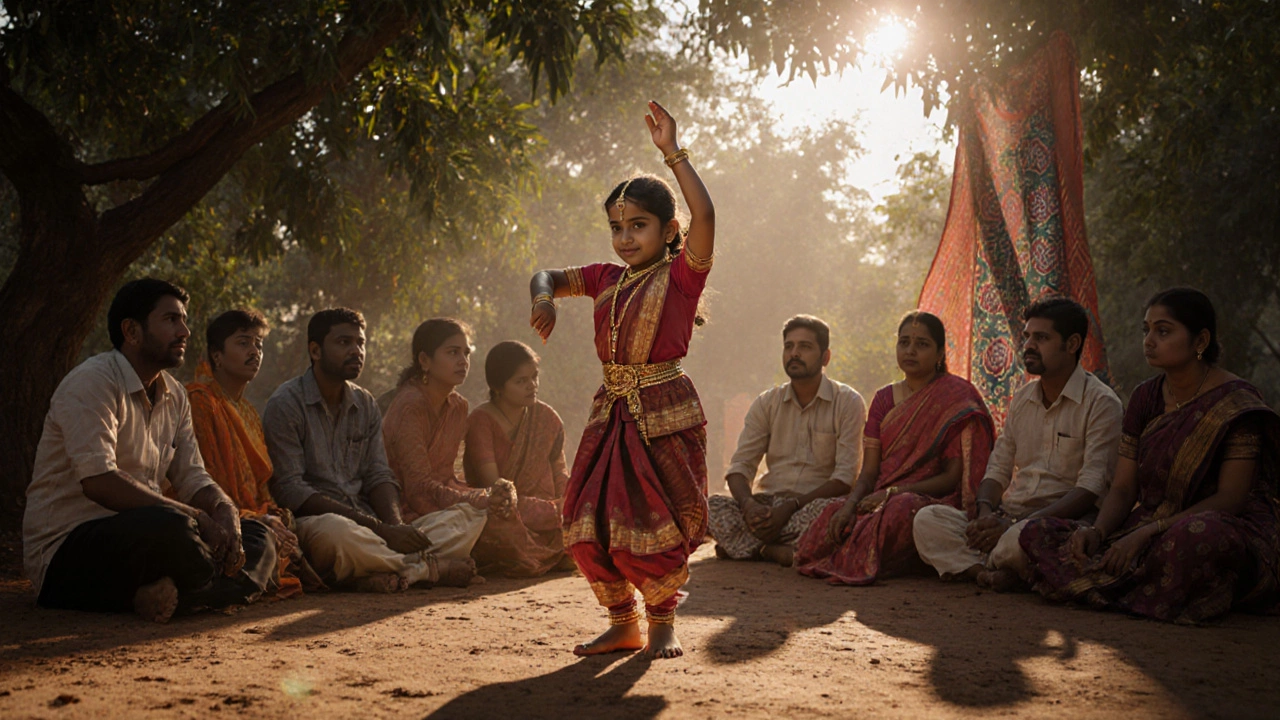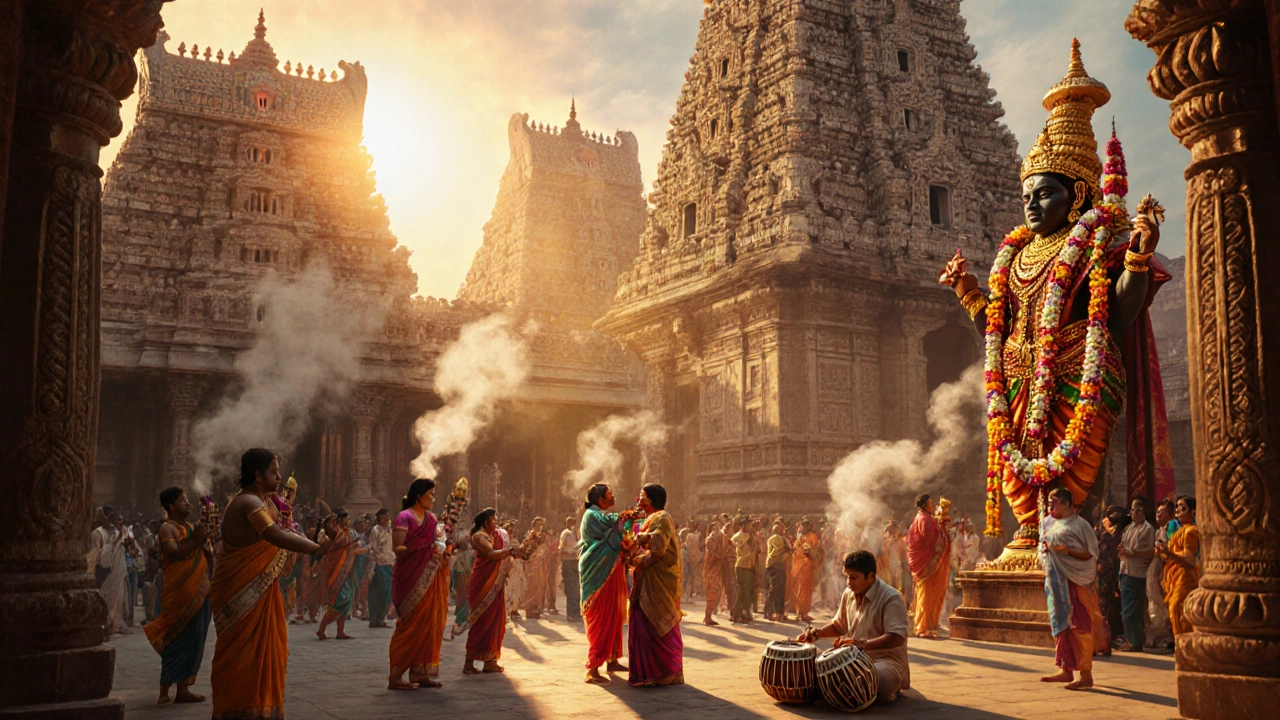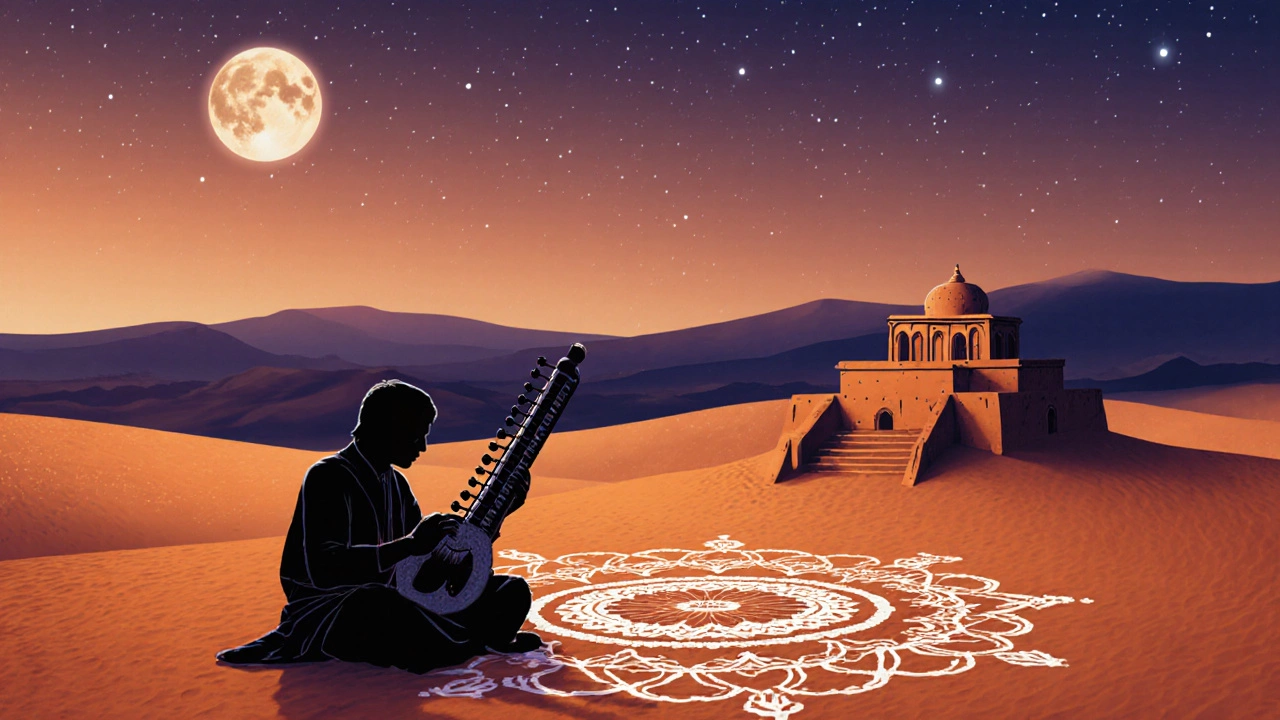SEARCH
Top 5 Cultural States in India for Authentic Heritage Experiences


India isn’t just a country-it’s a mosaic of living traditions, ancient rituals, and vibrant art forms that shift with every border you cross. If you’re looking for real culture-not staged performances for tourists but the heartbeat of daily life-some states stand out more than others. These aren’t just places with old temples or fancy festivals. They’re regions where culture isn’t a product. It’s the air people breathe.
Andhra Pradesh: Where Tradition Lives in Every Meal and Movement
Andhra Pradesh might not always top tourist lists, but if you want to see how a 2,000-year-old dance form like Kuchipudi still shapes how families celebrate, this is the place. In villages near Vijayawada, children learn Bharatanatyam before they learn multiplication. The state’s cuisine isn’t just spicy-it’s sacred. Every dish has a ritual meaning. The famous Pongal festival isn’t just about rice; it’s a thank-you to the earth, sung in Telugu folk songs passed down for generations.
Handloom weaving here isn’t a tourist attraction. It’s a livelihood. In Kalamkari villages, artists use natural dyes from plants and minerals to paint stories from the Mahabharata onto cotton. Each piece takes weeks. You won’t find mass-produced prints here-only one-of-a-kind textiles made by families who’ve done the same work for eight generations.
Tamil Nadu: The Living Temple City
Tamil Nadu doesn’t just have temples. It runs on them. In Madurai, the Meenakshi Temple wakes up at 5 a.m. with the ringing of bells, the chanting of Vedic hymns, and the scent of jasmine garlands. By noon, hundreds of devotees offer cooked rice to the goddess, and by evening, a classical Carnatic music concert fills the courtyard. This isn’t a show. It’s routine.
The state is the birthplace of Bharatanatyam, and every girl in a rural school learns at least one varnam by age ten. You’ll see temple sculptors in Kumbakonam carving deities with tools their grandfathers used. The bronze statues they make are still used in processions today-some weighing over 200 kilograms, cast using the lost-wax method unchanged since the Chola dynasty.
And then there’s the food. The thali here isn’t a meal-it’s a map of spiritual balance. Five tastes, five colors, five elements. Eat it wrong, and you’ve missed the point.

Rajasthan: Culture as a Way of Life, Not a Performance
People think Rajasthan is about camel safaris and pink cities. It’s more than that. In Jodhpur, the Rathore royal family still holds morning darbars where court musicians play ragas composed 400 years ago. In Bikaner, women wake before dawn to draw intricate rangoli patterns with colored powders-not for Instagram, but because it’s believed to invite good fortune.
The folk music here isn’t performed on stages. It’s played at weddings, harvests, and funerals. The Manganiyar musicians, a community of hereditary singers, carry 300-year-old instruments like the kamayacha and sing ballads about warrior queens and desert storms. Their songs aren’t recorded. They’re memorized. One elder in Jaisalmer told me he learned 172 songs from his father-and he’s still adding new ones.
Even the architecture tells a story. Stepwells in Jalore aren’t just for water. They’re social hubs where women gathered to sing, gossip, and pass down oral histories. Today, those same wells are still used, still echoing with voices.
Kerala: Rituals in Every Raindrop
Kerala’s culture doesn’t shout. It whispers. In Thrissur, the Pooram festival isn’t just elephants and fireworks. It’s a 12-hour symphony of percussion, where over 500 drummers play chenda in perfect unison, moving in sync like a single organism. The rhythm isn’t taught in schools. It’s learned by listening-by sitting at your grandfather’s feet during temple nights.
Here, Kathakali isn’t a dance you watch. It’s a transformation. Performers spend five hours daily applying makeup made from natural pigments. Each color means something: green for noble heroes, red for evil kings. A single performer might spend 15 years mastering just one role.
Yoga and Ayurveda aren’t trends here. They’re family medicine. In Kottayam, you’ll find homes where grandmothers prepare herbal oils using recipes from palm-leaf manuscripts. These aren’t sold in shops. They’re given to neighbors. The state’s 1,500-year-old martial art, Kalaripayattu, is still taught in traditional gurukuls-where students live with their teacher, clean the floors before dawn, and learn discipline before kicks.

Uttar Pradesh: Where India’s Soul Still Speaks Sanskrit
Varanasi doesn’t need a marketing campaign. The Ganges flows here, and so does history. Every morning, thousands gather on the ghats to bathe, pray, and offer flowers to the river. Priests chant Vedic mantras in Sanskrit-some of the oldest spoken languages still in daily use. These aren’t rehearsed chants. They’re passed down through priestly lineages for over 3,000 years.
In Lucknow, the Nawabi culture lives in the way people speak. The Urdu spoken here isn’t just a language-it’s poetry. Every greeting carries a metaphor. A simple “As-salamu alaykum” might be answered with a line from Rumi. Tea isn’t drunk. It’s ceremonially poured from a height to aerate it, a tradition from the Mughal courts.
And then there’s the crafts. Banarasi silk isn’t woven on machines. It’s done on handlooms by families who’ve spent generations threading gold and silver into fabric. One sari can take six months. You won’t find it in malls. You find it in small workshops where the weaver’s daughter is already learning the pattern before she turns ten.
Why These Five? And What You Won’t Find Elsewhere
These states aren’t the most visited. They’re the most alive. You won’t find culture here in museums or souvenir shops. You’ll find it in the way a grandmother teaches her granddaughter to fold a leaf for offering prayers. In the rhythm of a village drum that hasn’t changed in centuries. In the silence before a temple bell rings.
Other states have beauty. These five have depth. They’ve held onto their identity despite globalization, tourism, and modernization-not by resisting change, but by absorbing it without losing their core.
If you want to see India’s soul, don’t just visit. Listen. Wait. Be still. The culture will find you.
Are these cultural states safe for solo travelers?
Yes, especially in the rural and temple towns where culture is strongest. Locals are deeply respectful of visitors who show curiosity, not just camera lenses. In Tamil Nadu and Kerala, women travel alone safely even at night. In Rajasthan, homestays run by local families often host solo travelers with guided cultural walks. Just avoid large festivals during peak season unless you’re prepared for crowds. The real cultural immersion happens off the beaten path.
Can I experience these cultures without spending a lot of money?
Absolutely. Some of the richest cultural moments cost nothing. Attend a morning aarti at a temple in Varanasi. Sit with villagers during a harvest festival in Andhra. Watch a Kathakali rehearsal in a community hall in Kerala-many are open to the public for free. Stay in homestays instead of hotels. Eat at local dhabas. Buy crafts directly from artisans. In Tamil Nadu, you can get a traditional thali for under ₹100 ($1.20). The value isn’t in how much you spend-it’s in how deeply you connect.
What’s the best time of year to visit these cultural states?
October to March is ideal across all five. The weather is cooler, and most major festivals happen during this window. In Rajasthan, the Pushkar Camel Fair is in November. In Kerala, the Onam harvest festival is in August-September. In Uttar Pradesh, the Ganga Mahotsav in November brings music and rituals to the ghats. Avoid monsoon season (June-September) in Kerala and Andhra-flooding makes travel difficult and many rituals are paused.
How do I respectfully engage with local traditions?
Ask before taking photos, especially inside temples or during rituals. Dress modestly-cover shoulders and knees. Remove shoes before entering homes and temples. Never point your feet at deities or people. Accept food or offerings with both hands. If you’re invited to join a ceremony, follow quietly. Don’t treat rituals like photo ops. The best way to honor culture is to be quiet, observant, and grateful.
What’s one thing most tourists miss about these cultural states?
They think culture is something you see. It’s not. It’s something you feel. It’s in the silence after a temple bell rings. In the way a street vendor in Lucknow remembers your name after one conversation. In the smell of turmeric and sandalwood in a Kerala home at dawn. The real magic isn’t in the grand festivals-it’s in the ordinary moments where tradition hasn’t been sold. You have to slow down to find it.
If you’re ready to move beyond postcard India, start with one of these five states. Pick one. Stay a week. Don’t rush. Let the rhythm of the place seep into you. That’s when you’ll understand why culture here isn’t preserved-it’s lived.